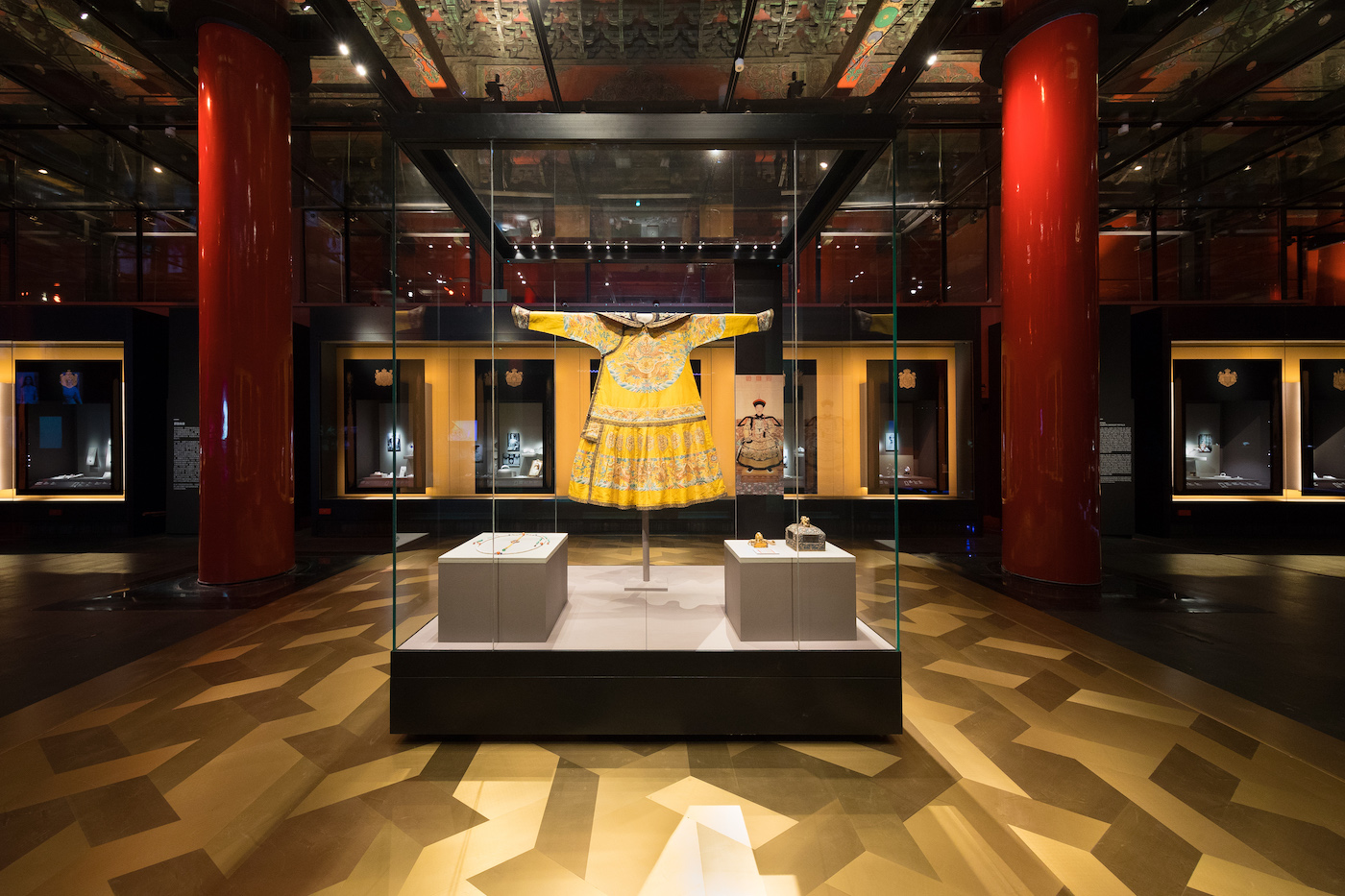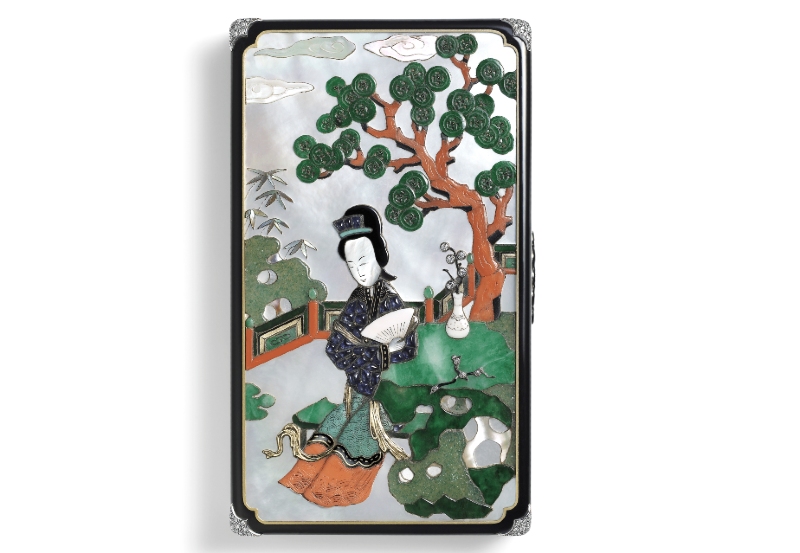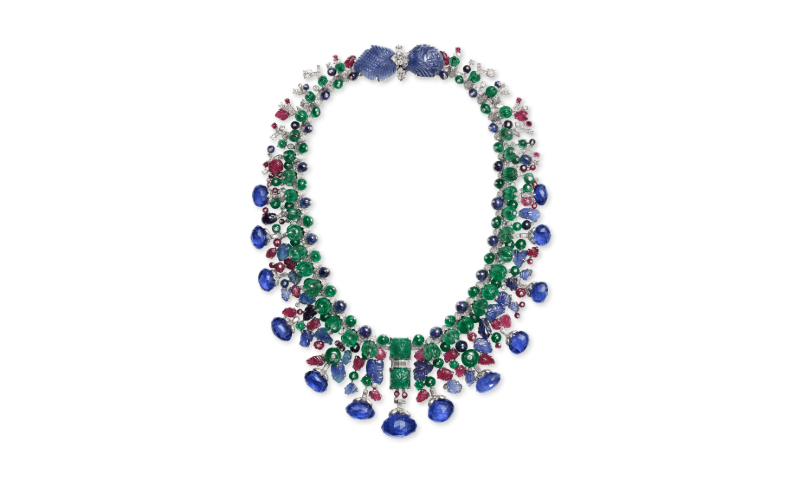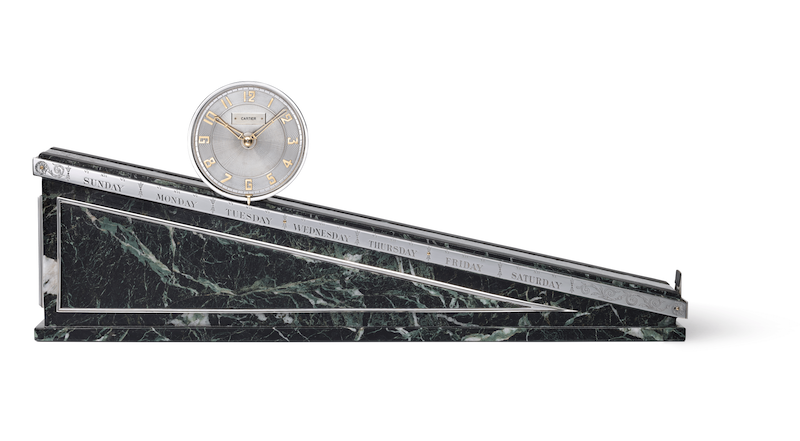
Bright yellow imperial silk robe with Twelve Motifs design; Qing Dynasty, Qianlong reign period (All photos: The Palace Museum Collection)
If you are one of those who swoons over tiaras, necklaces, bracelets and earrings bedecked with precious gems, chances are you will shout with delight at Beyond Boundaries: Cartier and the Palace Museum Craftsmanship and Restoration Exhibition, on show in Beijing until July 31.
For among the more than 800 items enticingly laid out at the Meridian Gate Galleries are prized collections that used to adorn the heads, necks and arms of royalty and nobility in the courts of China and Europe.
Symbols of Power is one theme of the collaboration between the French maison and the Palace Museum. The other two are Chinese Inspirations and Time Memories. Together, they enfold creations shaped by technique, experience and a boldness to explore ideas and do something different. Here are five exhibits you should not miss at the exhibition.
Chinese vanity case; Cartier Paris, 1928 (Nils Herrmann, Cartier Collection)
This receptacle for grooming items decorated with the image of a Chinese woman sitting in a garden was part of Louis Cartier’s personal collection. The inlaid plaque was made by the Cartier workshop based on a Chinese plate of famille-verte porcelain from the Kangxi period (1662–1722).

Bird brooch; Cartier Paris, special order, 1948 (Marian Gérard, Cartier Collection)
The phoenix, symbolic of peace, prosperity and immortality, was often used to adorn the robes of Chinese empresses. The celestial bird inspired this brooch, a stunning piece admired for its scale and the craftsmanship involved in setting the various cuts of diamonds.

Hindu necklace; Cartier Paris, special order, 1936, altered in 1963 (Nils Herrmann, Cartier Collection)
This piece specially fashioned for socialiate Daisy Fellowes, heiress to the Singer fortune, drips with platinum, white gold, diamonds, sapphires, emeralds and rubies. Originally made in the Indian style with black cord fastening round the back, it was remounted upon request.

Tortoise table clock; Cartier Paris, 1928 (Private collection, Studio Gérard)
The tortoise, a much-loved creature associated with longevity, crawls its way into many Chinese objects and motifs. This antique table clock in nephrite has a shell that opens to reveal a dial inlaid with mother-of-pearl, lapis-lazuli and turquoise.

Gravity clock; Cartier, circa 1910 (Nils Herrmann, Cartier Collection)
Gravity drives the movement of this clock, made of silver, gold, gilded metal and marble. Its case slowly travels down the inclined base until it reaches the bottom. Then it has to be moved back to the top of the incline manually.

Admission to 'Beyond Boundaries: Cartier and The Palace Museum' is free, but visitors have to buy a ticket to enter the Palace Museum. Opening hours are Tuesday to Sunday, 8.30am to 5pm (the ticket counter closes at 4pm). Closed on Mondays, except for national holidays. Tickets are priced at RMB60, with a 50% concession for visitors aged 60 and above. Free admission for children under 1.2m in height.
For online ticket bookings, click here. Foreign visitors are required to provide their passport number.
Look out for our full report in Options soon.


